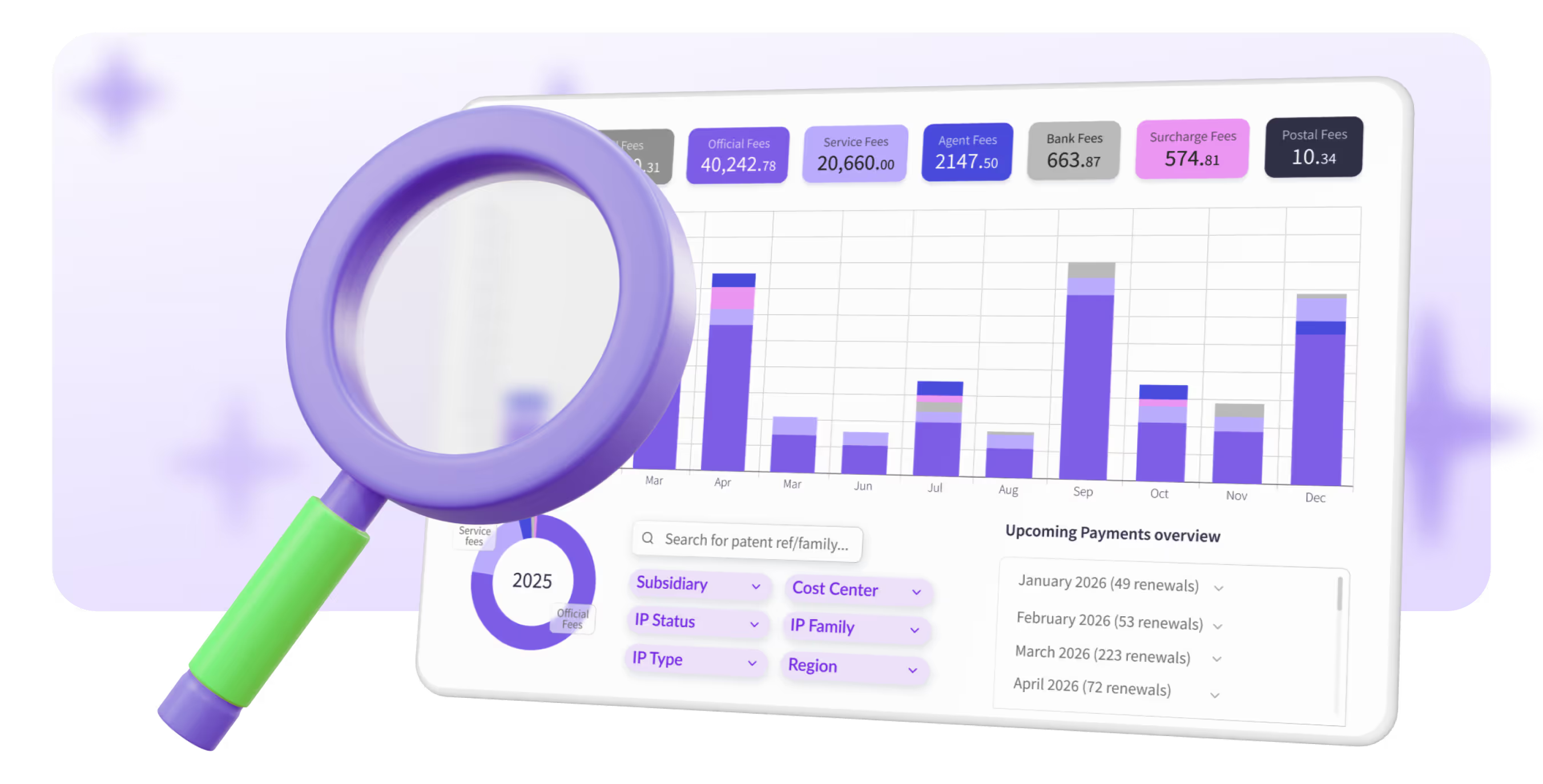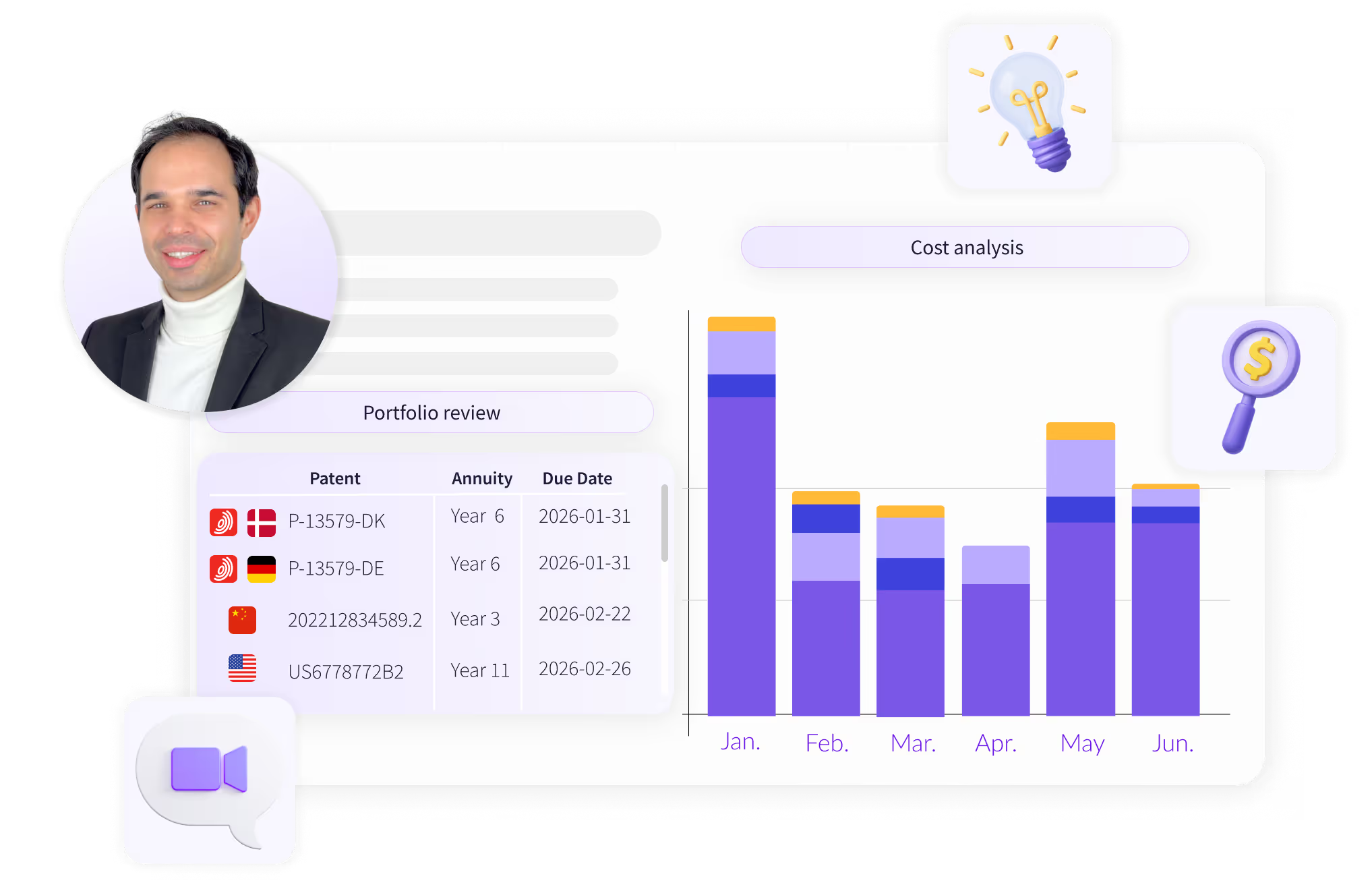TRY OUR NEW (FREE) IP RENEWAL COST CALCULATOR
Calculate
.png)
Patent protection used to be simple, and relied on paper-based systems. You filed an application, received a grant, and stored the certificate in a safe, a visible symbol of ownership and exclusivity.
But as technology and commerce have shifted online, those boundaries have become less defined. Today, an invention doesn’t just exist in a lab or a factory it exists in data, software, and global networks. This evolution has transformed what it means to keep a patent secure.
In collaboration with SmartProtection, a global brand protection company, we’ll walk through what patent security really means in the digital age.
Patent security in the digital age refers to the combined legal and technological measures that protect patented inventions from unauthorized use, replication, or commercialization across digital and global environments. It goes beyond simply owning a granted patent, it involves maintaining visibility, control, and enforceability throughout the entire online ecosystem where innovation now exists.
Patent security is therefore about safeguarding your innovation at every stage from monitoring online activity and gathering proof of patent infringement to acting quickly through enforcement.
When an invention is shared or sold online, it becomes instantly accessible to a worldwide audience including those looking to replicate it. The risks have expanded far beyond familiar competitors. Infringers can now operate anonymously, replicate patented designs, and distribute copies at scale within days.
Consider a patented industrial design: once images appear online, a 3D model can be generated within hours, and a manufacturer halfway across the world can begin producing near-identical products. Or take a patented software process, algorithms and code can be reverse-engineered, modified slightly, and integrated into unauthorized products without ever mentioning the original patent holder.
To truly protect a patent today, you need a strategy that attacks multiple fronts, focusing on both upholding your business’ legal right and digital vigilance. This is a holistic approach to patent safety and protection, a shift from the passive mindset, defensive stance to an active, offensive, proactive one.
Modern patent security rests on three pillars: proactive digital monitoring, evidence-based enforcement, and coordinated legal action. Together, these elements help protect both the legal and market value of your innovations.
1. Proactive digital monitoring for patent protection
Modern patent protection begins with visibility. Once a patent is granted, owners must actively track how their invention is used and referenced across digital and industrial environments. Continuous monitoring allows for early detection of potential infringements, minimizing costly enforcement actions and reinforcing your legal position through ongoing due diligence.
An effective monitoring framework should include the following focus areas:
Modern patent monitoring is now strengthened by advanced tools such as image recognition, automated crawlers, and AI-based alert systems, enabling faster, more accurate detection worldwide. Because patent rights are territorial, maintaining global oversight ensures you stay informed about potential infringements across every jurisdiction where protection applies.
2. Data-driven evidence collection for patent infringement
Once potential patent infringement is identified, the next essential step is to gather clear, verifiable evidence. In any patent dispute, the strength of your case depends on how effectively you can prove that another party is using your protected invention without authorization.
Effective evidence collection goes far beyond taking screenshots, it involves compiling both technical and contextual proof that directly connects the suspected product or process to your patent claims.
Key components of strong evidence include:
Having structured, verifiable data not only strengthens your legal enforcement efforts but also enables faster, more confident decision-making. Whether action is taken through formal litigation or direct takedown procedures, thoroughly documented and time-stamped evidence reinforces both the legitimacy and credibility of your patent rights.
3. Strategic takedowns and patent enforcement
Once sufficient evidence is collected, the next step is to take decisive action. In patent protection, enforcement requires a coordinated legal and operational approach that balances speed with accuracy. The goal is to stop infringement as early as possible while maintaining a defensible legal position.
A strong enforcement strategy can include:
Strategic enforcement combines legal precision with timely action. Whether resolved through negotiation or litigation, consistent follow-up ensures that each infringement case contributes to a stronger and more respected patent portfolio.
An effective patent security strategy combines strong legal foundations with continuous digital protection. The two are interdependent: without valid, up-to-date registrations, enforcement isn’t possible and without active monitoring, legal rights can’t be properly defended.
The legal framework defines ownership, scope, and enforceability, while digital tools provide real-time visibility into how and where your invention is used. When these functions operate together, enforcement becomes faster, evidence collection is more reliable, and actions against infringers carry more weight.
Collaborating closely between your legal counsel, internal teams, and digital monitoring partners ensures that every detected issue can translate into a timely and well-supported legal response.
Patent security has evolved into a continuous, data-driven discipline that safeguards innovation in an increasingly digital world. With new technologies like AI-based monitoring, blockchain timestamping, and digital verification tools, protection is becoming predictive rather than reactive. These systems can identify risks before they escalate and provide verifiable proof of ownership across global markets.
Today, effective patent portfolio protection depends on integrating legal precision with digital intelligence. A well-managed patent portfolio supported by consistent vigilance not only prevents infringement but also preserves the lasting value and integrity of your innovations.By combining sound legal management with continuous digital vigilance, patent owners can protect not only their rights but the long-term value of their innovation.
To learn more about effective patent protection, check PatentRenewal.com’s automated IP renewal solution.
Interested in a free IP renewal consultation? Benchmark your current IP renewal setup and costs against market standards.
